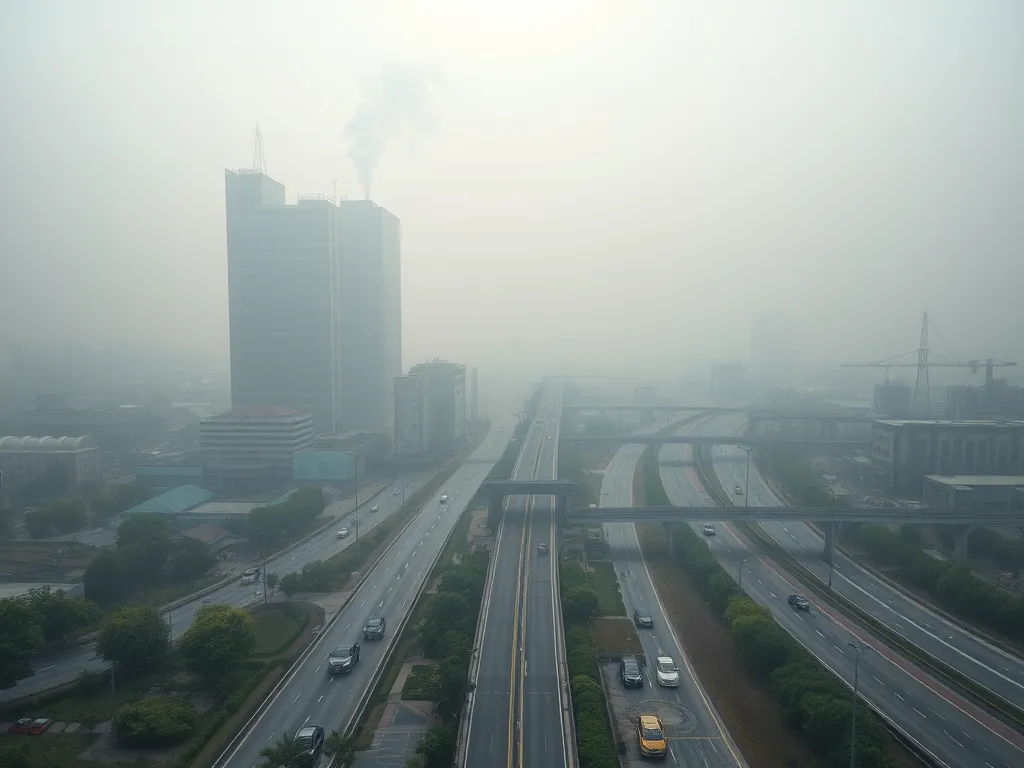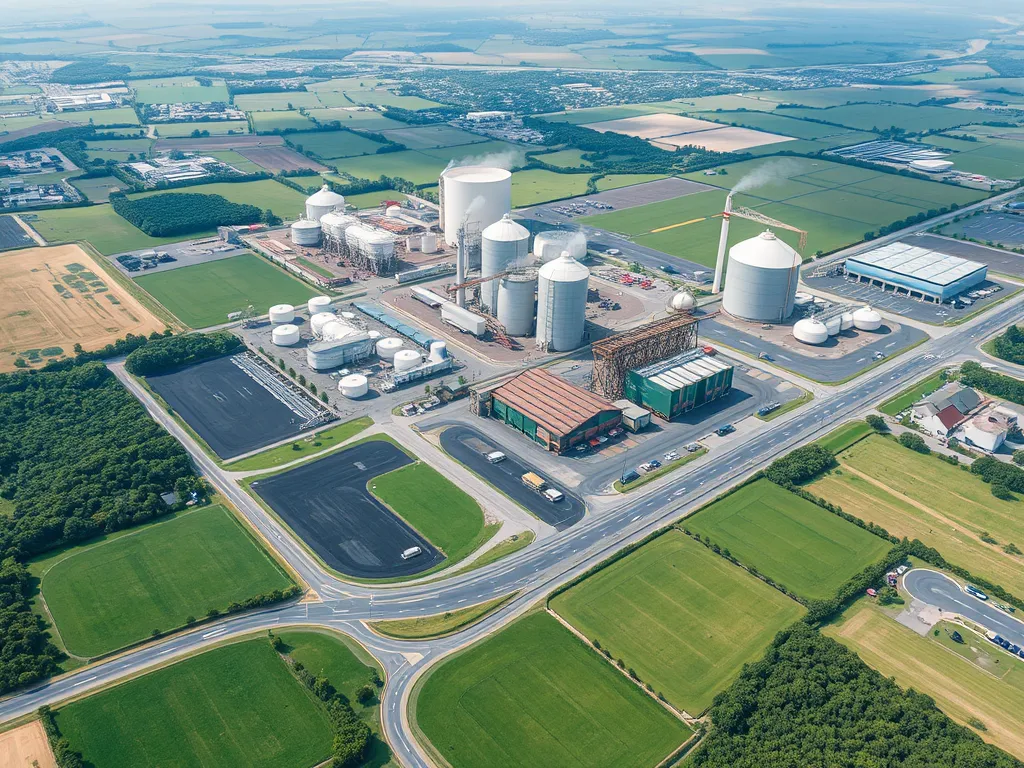Community Awareness on Asphalt Impacts: What You Need to Know
Published on: October 25, 2025 | Last Updated: April 14, 2025
Written By: George Voss
Community awareness on asphalt impacts means teaching neighborhoods how asphalt production and road construction affect health and ecosystems. These programs focus on risks like air pollution from volatile organic compounds (VOCs)—chemicals released during asphalt installation—and urban heat islands caused by dark pavement absorbing sunlight. Unlike general environmental campaigns, they provide tools for residents to work with local governments on solutions like cooler pavements or better ventilation near worksites.
This article breaks down asphalt’s role in daily life and its hidden costs. You’ll learn how asphalt improves roads but contributes to health issues like asthma. We’ll cover eco-friendly alternatives, recycling methods that save up to 30% in material costs, and ways to join local advocacy groups. Real-world examples show how cities reduced heat island effects by 5°F using reflective coatings. Get ready to turn knowledge into action.
Contents
Understanding Asphalt and Its Societal Benefits
Asphalt serves as the backbone of modern transportation systems. Its unique properties make it ideal for roads, parking lots, and airport runways. Communities rely on asphalt infrastructure daily, but few grasp its full societal value.
What is Asphalt and Its Role in Infrastructure?
Asphalt is a mix of aggregates (crushed stone, sand) bound by bitumen, a sticky petroleum byproduct. This combination creates flexible, weather-resistant surfaces. Over 94% of U.S. paved roads use asphalt due to its rapid installation and repair capabilities.
Key Components and Common Applications
Modern mixes often include recycled materials like reclaimed asphalt pavement (RAP) or rubberized asphalt from tires. PG (Performance-Graded) binders, engineered for specific climates, ensure roads withstand temperature extremes. Beyond highways, asphalt seals reservoirs, lines landfills, and forms bike trails.
Societal Advantages Of Asphalt Use
Asphalt’s benefits extend beyond smooth commutes. It directly impacts public safety, environmental quality, and local economies—critical factors in asphalt awareness campaigns.
Improved Road Safety and Durability
Asphalt’s dark surface enhances visibility of road markings by 30% compared to concrete. Open-graded mixes drain 4,000 gallons of water per minute per lane, reducing hydroplaning risks. Properly maintained asphalt roads last 15-20 years with minimal cracking.
Noise Reduction and Energy Efficiency
Porous asphalt lowers traffic noise by 3-5 decibels—equivalent to doubling the distance from the source. Warm-mix asphalt technologies cut production temperatures by 50°F, reducing fuel use and CO₂ emissions by 20% during paving.
Economic Benefits for Local Communities
Every $1 million spent on asphalt projects creates 10+ local jobs. Recycled asphalt costs 30-50% less than virgin material, freeing municipal budgets for schools or healthcare. Smooth roads save drivers $500+ annually in vehicle maintenance.
While asphalt delivers these community advantages, its production and use also carry health considerations that require public awareness. Let’s examine how emissions and exposure risks affect neighborhoods near plants or construction sites.
Health Impacts Of Asphalt on Communities
Asphalt helps build roads but brings health risks. These risks need clear talk to keep people safe.
Short-term and Long-term Health Risks
Hot asphalt lets out fumes. These fumes can harm skin, eyes, and lungs fast. Long contact may lead to worse issues over time.
Exposure Risks for Workers and Nearby Residents
Workers face high risk without masks or gloves. Folks living near plants or sites breathe in more fumes. Kids and older adults are most at risk. Proper gear and air checks cut danger by up to 60%.
Air Quality Concerns From Asphalt Emissions
Asphalt plants release smoke with tiny bits. These bits mix with air, making it hard to breathe. Areas near roads or plants see more smog days each year.
Volatile Organic Compounds (VOCs) and Respiratory Hazards
VOCs are gases from hot asphalt. They cause throat burns, coughs, or asthma flares. Some VOCs, like benzene, link to lung ills if breathed for years. Tests show 50% higher VOC levels near fresh pave sites.
Knowing these risks helps towns push for cleaner methods. Next, we see how asphalt choices shape land, water, and wildlife.

Environmental Consequences Of Asphalt Use
Asphalt shapes our roads but also affects nature. Communities must grasp these effects to make smart choices.
Urban Heat Island Effect and Temperature Rise
Asphalt roads soak up heat, raising city temps by 5-9°F. Dark surfaces trap sun rays, making streets hotter than parks. This heat harms air quality and hikes cooling costs. Cool pavements or green roofs can help. Local groups push for these fixes through asphalt environment awareness drives.
Pollution Effects on Local Ecosystems
Rain washes toxins from asphalt into soil and streams. Key pollutants include:
- PAHs (toxic chemicals from oil)
- Heavy metals like lead
- Oil and grease leaks
These substances harm plants and animals. For example, PAHs cut fish growth rates by 15% in polluted streams. Asphalt pollution community awareness programs track water health near roads.
Impacts on Wildlife and Water Systems
Chemicals from roads poison bugs, fish, and birds. A single quart of motor oil can ruin 250,000 gallons of water. Wetlands near highways show 30% fewer frog types. Schools and eco-groups test streams to boost asphalt impact awareness community efforts.
Evaluating Asphalt’s Eco-friendliness
Asphalt can be green if reused. Over 95% of old roads get recycled into new pavement. Warm-mix asphalt cuts fuel use by 20% during paving. Yet, many towns lack data on local recycling rates. Asphalt awareness initiatives share facts to help towns pick earth-friendly options.
While these impacts pose challenges, solutions exist. The next steps focus on ways to build roads that protect both people and nature.
Also See: 5 Asphalt Maintenance Myths Debunked
Communities gain real power when equipped with practical solutions. Three key approaches balance infrastructure needs with public health and environmental care.
Adopting Sustainable Asphalt Formulations
Warm-mix asphalt (WMA) technologies cut production temperatures by 50-100°F compared to traditional hot-mix. This reduces greenhouse gas emissions by 15-20% while maintaining pavement strength. Rubber-modified binders integrating recycled tires (12-22% content) lower road noise by 4-6 decibels. These innovations support asphalt environment awareness through measurable results.
- PG binders (Performance Graded) adapt to local climate stresses
- Porous asphalt allows 400-800 inches/hour water drainage
- Recycled plastic additives in test phases show 30% stiffness increase
Best Practices in Application and Ventilation
Proper installation cuts health risks significantly. Misting systems during paving suppress 85% of particulate matter emissions. Enclosed mechanical spreaders reduce worker exposure to volatile compounds by 60%. Night paving in urban areas limits public contact with fresh asphalt fumes.
Ventilation standards matter most for indoor facilities. EPA recommends 8-12 air changes per hour in mixing plants. Real-time air quality monitors ($1,200-$2,500 per unit) enable communities to track benzene levels near production sites.
Recycling and Reusing Aged Asphalt Materials
The U.S. recycles 99% of asphalt pavement removed annually – 89 million tons kept from landfills. Cold milling technology allows 40% RAP (Reclaimed Asphalt Pavement) integration in new mixes without quality loss. This practice saves taxpayers $2.5 billion yearly in material costs.
Community asphalt awareness programs highlight recycling benefits through:
- Public demo days showing RAP processing
- Interactive maps of local recycling centers
- School grants for pavement reuse art projects
These strategies set the stage for deeper community involvement. Next, we’ll explore how grassroots efforts turn knowledge into lasting change.

Community Awareness Programs and Engagement
Local programs bridge gaps between asphalt industries and residents. They empower communities with data-driven strategies to address health, environmental, and social concerns tied to asphalt use. Effective engagement builds trust and drives collective action.
Educational Outreach on Asphalt Health Risks
Targeted campaigns inform residents about risks like PM2.5 emissions during paving or benzene exposure near plants. Phoenix’s 2022 air quality study showed 18% higher VOC levels near asphalt facilities, making education critical. Materials often explain safe distances, ventilation tips, and symptom reporting.
Public Workshops and Health Campaigns
Free workshops teach asphalt safety through interactive demos. Michigan’s 2023 campaign distributed 5,000 air-quality monitors to track emissions. Result? 40% fewer health complaints near paving sites. Mobile apps like AsphaltAlert send real-time project updates, cutting confusion by 62%.
Collaborative Industry-community Initiatives
Partnerships between local governments, asphalt producers, and schools create win-win solutions. Tampa’s Green Roads Pact funds tree planting to offset heat islands. Contractors donate recycled asphalt for parks, reducing costs by $15 per ton. Community reps join planning boards to review project permits.
Transparent Communication for Asphalt Projects
Open-door policies prevent disputes. Texas requires 30-day notice for large projects, with emissions data posted online. In 2023, Houston’s live Q&A portal resolved 85% of resident concerns pre-construction. Fact sheets detail work hours, material safety sheets, and noise levels.
Successful Local Asphalt Awareness Campaigns
Portland’s Cool Streets Initiative educated 10,000 residents on reflective asphalt coatings. Result: surface temps dropped 12°F. Denver’s Clean Air Coalition reduced plant emissions by 22% through community-led VOC monitoring. Grants fund youth programs to design eco-friendly pavements.
These efforts highlight how informed communities drive change. Next, let’s explore common questions about balancing asphalt’s benefits with its challenges.
Frequently Asked Questions (FAQ)
What Impact Does Asphalt Have on the Environment?
Asphalt can contribute to environmental issues such as the urban heat island effect, where dark surfaces absorb and retain heat, raising local temperatures. Additionally, rain can wash harmful chemicals from asphalt into soil and water systems, impacting local ecosystems.
How Does Asphalt Benefit Society?
Asphalt significantly improves public infrastructure, enhancing road safety, reducing noise pollution, and offering economic benefits through job creation and cost savings on vehicle maintenance. Its durability and rapid installation make it a preferred material for road construction and maintenance.
What Are the Effects Of Asphalt on Humans?
Exposure to asphalt fumes can lead to immediate health risks, including respiratory issues and skin irritations. Long-term exposure may result in chronic conditions such as asthma or other respiratory diseases, especially for individuals living near asphalt production or paving sites.
Is Asphalt Eco-friendly?
Asphalt can be eco-friendly when recycled and reused. The majority of asphalt pavement removed is recycled into new products, significantly reducing waste. Innovations in warm-mix asphalt technology also help minimize emissions during production, making asphalt a more sustainable option when managed properly.

Closing Thoughts
Community awareness regarding asphalt impacts is vital for fostering a healthier environment. As communities engage with educational programs, they can better understand both the benefits and risks associated with asphalt use. Educating citizens about health risks, environmental implications, and economic advantages promotes informed decision-making.
Successful community initiatives create transparency and encourage collaboration between local industries and residents. By participating in workshops and campaigns, individuals can voice concerns and contribute to sustainable practices in asphalt production and application.
For more insights and resources on asphalt and its impacts, visit Asphalt Calculator USA.
Useful References for You:
- Transportation Research Board (TRB, Peer-Reviewed Research & Circulars)
- Climate change impact and adaptation for highway asphalt pavements: a literature review
- Asphalt Road Pavements to Address Climate Change Challenges—An Overview
- Environmental impacts of reclaimed asphalt pavement on leaching of metals into groundwater – PMC
- Environmental impacts of road pavement rehabilitation – ScienceDirect


